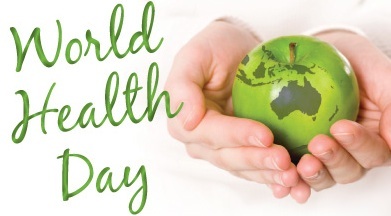Every year 40,000 people are formally diagnosed with HIV. Currently there is an estimated 1.2 million people living with HIV. The number that should be getting diagnosed is actually much higher, as 13-20% of the 1.2 million are unaware that they are infected.
What most people don’t know about HIV is that there are three stages, AIDS being one of them.
- Acute infection. About 2-4 weeks after being infected, the individual will suffer many flu symptoms in addition to severally swollen glands and a borderline headache/migraine. Many people describe this stage as the worst flu of their life. The individual can transmit the virus to others as soon as 2 weeks after being infected.
- Latency. After this the virus goes into hiding. It will continue to multiple at low levels in your blood. There will be no visible symptoms, and this stage can last anywhere from a few months to decades. The individual can still transmit the virus to others at this stage.
- AIDS. The individual’s immune system crashes. It allows them to be easily infected by another infection. The life expectancy once you get to this stage is under 3 years. The individual is still contagious until the very end.
There are medications that can be taken to slow the rate or chances of one’s latency from progressing to AIDS, like ART (Antiretroviral Therapy). Two other drugs have recently come onto the market. PrEP and PEP (pre-exposure prophylaxis and post-exposure prophylaxis) work as precautionary measures to decrease the likelihood of infection. PrEP can be taken daily for as long as you are at risk and PEP can be taken after an encounter where you believe you were exposed. They work to lower the likelihood of infection by as much as 97%.
There are several things that one can do to lower their chances of infection.
- Where a male/female condom during every sexual encounter. This includes oral and anal as well as vaginal. HIV is transmitted through blood, semen, pre-seminal fluids, rectal fluids and vaginal fluids. A condom decreases the chances that one will come in contact with one of these mediums. Women are even more likely to be infected during vaginal sex then their male counterparts. The infected semen has a large surface area to come in contact with and can remain in the vagina for several days, increasing the risk.
- Be treated for other STDs. More so then men, women increase their chances of HIV by having by having another STD. The other STD lowers any barriers the body may have making it easier for the virus to get in.
- Avoid injectable drugs. By sharing needles or using needles of unknown history, you may be contaminating yourself with infected blood.
- Avoid the misuse of alcohol and drugs. These cause impairments in your decision making abilities. Doing so may decrease the chance of using a condom or increase the chance of using a needle.
- Be monogamous. If that is not an option, talk to your sexual partners about their history. If someone is unsure of their status, have them get tested. For now, under Obamacare you can get tested for free.
- Take PrEP. It may be expensive, but this preemptive move may save you more than what you would spend if you did contract HIV.
- Take PEP. If something happens and you think you might have been exposed, begin taking the necessary doses of PEP within 72 hours of the contact.
There are also several threats that only effect women. This awareness day works to bring attention to both the above facts and these. Women are more likely to be the victims of sexual abuse.People that have histories of abuse are more likely to not go in for testing. They are also less likely to receive treatment for HIV if they are already positive. The abuse itself might give frequent exposure to the virus.
Women are also able to transmit the virus to their children through breastfeeding. Mothers are warned to not breastfeed their babies and to find a local breast milk bank or to use a formula. If the mother does, the chances of the baby becoming infected decreases to less than 1%.
For more information visit www.womenshealth.gov.
Sources:
https://www.womenshealth.gov/nwghaad/about-national-women-and-girls-hivaids-awareness-day
https://www.womenshealth.gov/nwghaad/what-every-girl-needs-know-about-hiv-and-aids
https://www.womenshealth.gov/hiv-and-aids/hiv-prevention
https://www.aids.gov/hiv-aids-basics/hiv-aids-101/statistics/
https://www.aids.gov/hiv-aids-basics/just-diagnosed-with-hiv-aids/hiv-in-your-body/stages-of-hiv/
https://www.womenshealth.gov/nwghaad/what-every-woman-needs-know-about-hiv-and-aids


